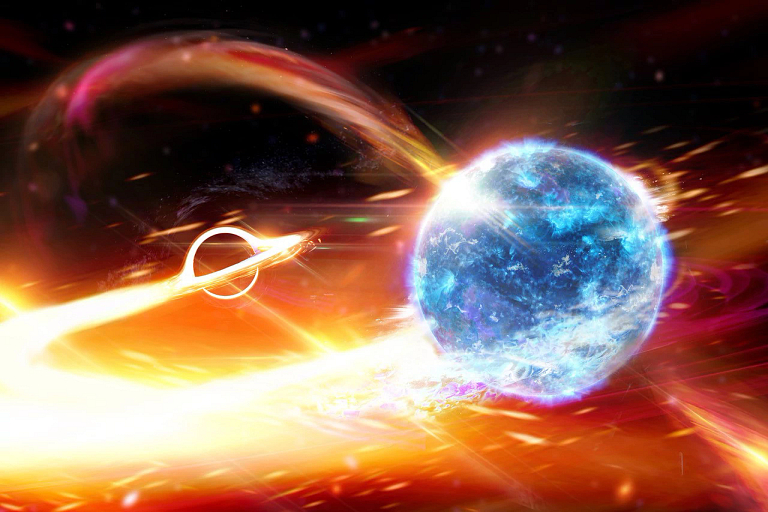Indiana University is collaborating on a new National Science Foundation project to study one of the mysteries of the universe and better understand the nature of matter.

A $3.25 million, five-year grant from the NSF will support the Nuclear Physics from Multi-Messenger Mergers Focus Research Hub that will study the structure of neutron stars, the densest objects in the universe. The research hub will perform a new kind of astronomy, observing both light and minute oscillations of space and time known as gravitational waves.
The collaborative study of neutron stars will try to answer principle questions and better predict the formation of elements, said Charles Horowitz , a physics professor in the IU Bloomington College of Arts and Sciences.
"We want to answer two questions in particular: One, what is the nature of matter at its most extreme, just before gravity crushes matter as we know it and a black hole is formed?" said Horowitz, who is on the research hub's executive board. "Is this extreme matter made out of larger particles such as neutron or protons, or is it made out of quarks?
"Two, how are the chemical elements made? Half of the heavy elements, including gold and uranium, are believed produced during neutron star mergers."
Massive stars that burn out and collapse under their gravity pull their protons and neutrons in tightly and become either a black hole or a denser neutron star. When neutron stars collide, the collision creates gravitational waves, which signal the presence of neutron star mergers. Researchers want to use gravitational waves, first predicted by Albert Einstein, to better understand what happens inside the collisions and study the dense matter at the core of neutron stars.
The Nuclear Physics from Multi-Messenger Mergers project, or NP3M, is led by the University of Tennessee-Knoxville and includes research teams from IU, Penn State, the University of Houston and Syracuse University. The partnership also includes 16 senior investigators from U.S. universities and national laboratories, and provides an opportunity for postdoctoral researchers.
Indiana University, including graduate students and one postdoctoral fellow, will make calculations of the properties of dense matter, which will be used in neutron star merger computer simulations by the Penn State group and others, Horowitz said.
"We hope to predict and then observe the fireworks when matter is compressed to its densest most extreme form, just before collapse into a black hole," Horowitz said. "These fireworks may reveal the properties of a new kind of matter made of quarks."
Quarks are elementary particles that are key constituents of matter.
IU also will be involved in two NP3M summer schools for graduate students and postdoctoral fellows from around the world.
"We hope to help train the next generation of gravitational wave astronomers," Horowitz said.






